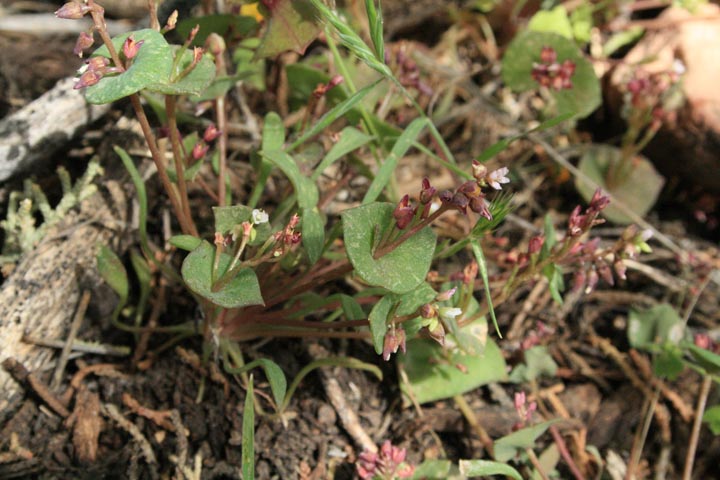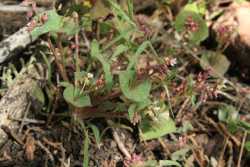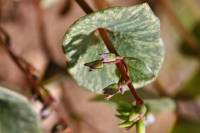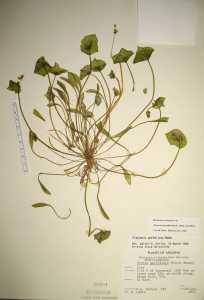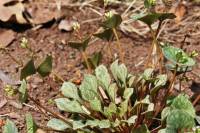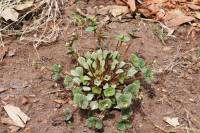Plants annual, with minute, tuberous bodies; periderm absent. Stems 5-30 cm. Leaves: blades green or pink, not glaucous; basal leaves petiolate, blade linear (sometimes filiform), narrowly lanceolate, spatulate, or rhombic, 1-15 × 0.5-1 cm; cauline leaves sessile, blade linear and 0.5-4 cm, or perfoliate and 10 cm or less diam. Inflorescences 1-bracteate; bract 0.5-15 mm, leaflike. Flowers 2-12 mm diam.; sepals 1.5-4 mm; petals white or pink, 2-8 mm; ovules 3. Seeds 1-2.5 mm diam., shiny and smooth or with low tubercles, not pebbly; elaiosome 1-3 mm. 2n = 12, 24, 36, 48.
PLANT: Annual herbs, to 15 cm tall, spreading to erect.
LEAVES: basal leaves linear to narrowly oblanceolate, 1.9-12.8 cm long, 0.1-4 cm wide, tapering gradually to petiole; cauline leaves 2, free, or connate into a perfoliate disk with margins entire, sometimes with 2 apiculate or mucronate tips.
INFLORESCENCE: a stalked or sessile raceme, dense or open, subtended by a single, often obscure bract.
FLOWERS: 3 -19; sepals 1 - 2.5 mm long; petals 2.5 - 5 mm long, oblong, notched at tip, pink or white.
SEEDS: 1 - 1.5 mm long, black.
NOTES: 4 subspp. (3 in AZ); w N. Amer. Based upon Miller’s treatment for Flora of North America (2003) and annotated herbarium specimens, three subspecies of Claytonia parviflora have been recognized in Arizona. Subspecies viridis is morphologically distinct from the others because its cauline leaves are distinct vs. connate-perfoliate as in the other two subspecies. Subspecies parviflora and utahensis seem to be distinct only in their respective geographic ranges. Subspecies utahensis is found north of the Mogollon Rim, whereas subsp. parviflora is found s of the Mogollon Rim. We observed a large amount of variability in basal leaf shape, which, according to Miller, delimits these subspecies (see key below).
REFERENCES: Allison Bair, Marissa Howe, Daniela Roth, Robin Taylor, Tina Ayers, and Robert W. Kiger., 2006, Vascular Plants of Arizona: Portulacaceae. CANOTIA 2(1): 1-22.


